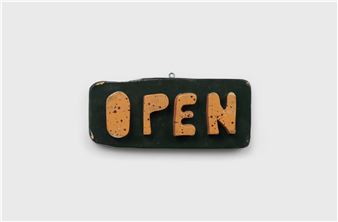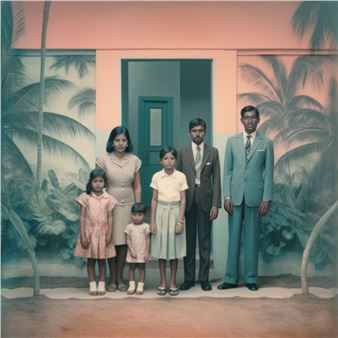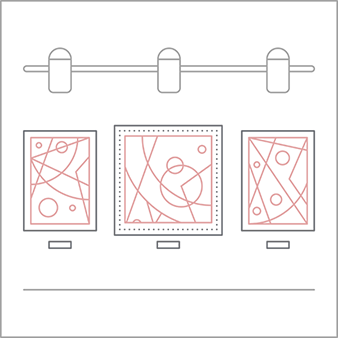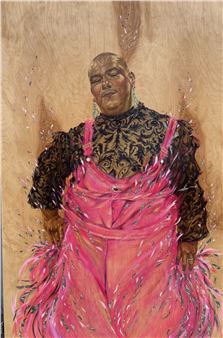Second Body
David Kordansky Gallery is pleased to present Second Body, an exhibition of works by nearly thirty artists that explores the dissolving boundaries between all life on earth. On view from July 15 through August 16, 2025, in Los Angeles at 5130 W. Edgewood Pl., the exhibition considers the porous intersections of the individual body, the environment, and technology. An opening reception will be held on Tuesday, July 15 from 6 until 8 PM.
Curated by Molly Everett, an artist liaison at the gallery, and inspired by Daisy Hildyard’s 2019 essay “The Second Body,” the exhibition invokes her concept of how every human is a singular being, made of flesh and bone, at once separate yet simultaneously diffuse and intimately joined; one of many “implicated in the whole world.” Considering this interconnected and pluralistic presence of the individual body and the increasing permeability of boundaries in the face of climate change, the featured artworks span a variety of media, including sculpture, painting, ceramics, collage, photography, installation, and video.
Among the highlights in this diverse, multi-generation-spanning exhibition are new and recent paintings by Lucy Bull, Ali Eyal, Sayre Gomez, Shara Hughes, Tavares Strachan, Rachel Rossin, Christopher Kulendran Thomas, and Tristan Unrau; sculptures by Kahlil Robert Irving, Josh Kline, Ohad Meromi, Shahryar Nashat, Berenice Olmedo, Magali Reus, Chiffon Thomas, and Kaari Upson; video and photographic work by Guan Xiao, Rose Salane, and Ashley Teamer; and works by Jeffrey Meris, Xin Liu, and Anicka Yi that transcend traditional genre distinctions.
Central to the exhibition is the body, both human and non-human, and its physical presence and material resonance as it pertains to the earth’s resources and technology. A sculpture by Chiffon Thomas, for example, reveals the mutant corporeality of a tree in a form that resembles a trunk with delicate layers of bark that gives way to a torso and humanoid chest. In Xin Liu’s genre-defying work, a central spine with black snaking arteries expands across a silicone panel that supports bronze lips. Cast from the artist’s body, the lips are encased with layers of frost due to a cooling mechanism referencing technologies that interfere with natural life cycles as well as the role of the female body in perpetuating the human species.
Although the body is inherently connected to the earth, contemporary lived experience and embodiment are frequently mediated through technology. Artists including Moka Lee, Tristan Unrau, Rachel Rossin, Christopher Kulendran Thomas, and Anicka Yi consider the phenomenological experience of technology, examining how virtual and real spaces intersect to shape perception. A surreal portrait by Moka Lee signals unsettling realities of digital life, including modern disconnection and disaffection. For Rachel Rossin, painting is a record of the body’s nervous system, where expressive gestures intertwine with AI-generated imagery trained on her own work, reflecting her deep enmeshment with technology. To generate her composition of painterly gesture and material fluidity, Anicka Yi also utilizes a custom software that orchestrates the interplay of ink-like movement and machine learning. This process, for Yi, resists the binary of human versus machine creativity, and instead proposes a model of co-composition and open-ended dialogue that can lead to aesthetic and conceptual transformation. Similarly, Christopher Kulendran Thomas generates the images for his paintings, which are executed by hand, by employing a neural network trained on the colonial art history that was first brought to Sri Lanka by European settlers. Central to Kulendran Thomas’ practice is the uncertainty about where the human ends and everything else begins, including the flows of networks and ecologies.
This bodily displacement and fragmentation also point to the irregularity and inequity of exploited landscapes increasingly dominated by industry. To this effect, Carlos Agredano’s canvas stained with blooms of smog and debris points to histories of discriminatory practices in the development of the Los Angeles freeway system while demonstrating how environmental racism continues to disproportionately impact communities of color. On the façade of the gallery, Agredano’s Environmental Protection Agency Air Quality Flag Program signals the changing air conditions specific to the area surrounding the gallery. At the same time, Josh Kline investigates issues of labor and uneven conditions of livability exacerbated by industry and capitalism by repurposing found objects, such as a gas canister, in his suspended sculpture.
Taken together, this presentation seeks to consider such paradoxical entwinements while investigating how the individual body, in all its multiple material and immaterial realities, can function as a site of transformation and as a bridge between personal and collective experience. The diverse works on view invite reflection on the complexities of our physical presence and the fluidity of existence within intertwined social, environmental, and material histories while illuminating the vital need for imaginative and pluriversal perspectives of spheres beyond the human.
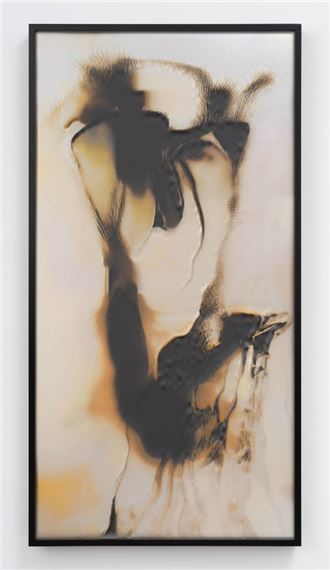
Recommended for you
David Kordansky Gallery is pleased to present Second Body, an exhibition of works by nearly thirty artists that explores the dissolving boundaries between all life on earth. On view from July 15 through August 16, 2025, in Los Angeles at 5130 W. Edgewood Pl., the exhibition considers the porous intersections of the individual body, the environment, and technology. An opening reception will be held on Tuesday, July 15 from 6 until 8 PM.
Curated by Molly Everett, an artist liaison at the gallery, and inspired by Daisy Hildyard’s 2019 essay “The Second Body,” the exhibition invokes her concept of how every human is a singular being, made of flesh and bone, at once separate yet simultaneously diffuse and intimately joined; one of many “implicated in the whole world.” Considering this interconnected and pluralistic presence of the individual body and the increasing permeability of boundaries in the face of climate change, the featured artworks span a variety of media, including sculpture, painting, ceramics, collage, photography, installation, and video.
Among the highlights in this diverse, multi-generation-spanning exhibition are new and recent paintings by Lucy Bull, Ali Eyal, Sayre Gomez, Shara Hughes, Tavares Strachan, Rachel Rossin, Christopher Kulendran Thomas, and Tristan Unrau; sculptures by Kahlil Robert Irving, Josh Kline, Ohad Meromi, Shahryar Nashat, Berenice Olmedo, Magali Reus, Chiffon Thomas, and Kaari Upson; video and photographic work by Guan Xiao, Rose Salane, and Ashley Teamer; and works by Jeffrey Meris, Xin Liu, and Anicka Yi that transcend traditional genre distinctions.
Central to the exhibition is the body, both human and non-human, and its physical presence and material resonance as it pertains to the earth’s resources and technology. A sculpture by Chiffon Thomas, for example, reveals the mutant corporeality of a tree in a form that resembles a trunk with delicate layers of bark that gives way to a torso and humanoid chest. In Xin Liu’s genre-defying work, a central spine with black snaking arteries expands across a silicone panel that supports bronze lips. Cast from the artist’s body, the lips are encased with layers of frost due to a cooling mechanism referencing technologies that interfere with natural life cycles as well as the role of the female body in perpetuating the human species.
Although the body is inherently connected to the earth, contemporary lived experience and embodiment are frequently mediated through technology. Artists including Moka Lee, Tristan Unrau, Rachel Rossin, Christopher Kulendran Thomas, and Anicka Yi consider the phenomenological experience of technology, examining how virtual and real spaces intersect to shape perception. A surreal portrait by Moka Lee signals unsettling realities of digital life, including modern disconnection and disaffection. For Rachel Rossin, painting is a record of the body’s nervous system, where expressive gestures intertwine with AI-generated imagery trained on her own work, reflecting her deep enmeshment with technology. To generate her composition of painterly gesture and material fluidity, Anicka Yi also utilizes a custom software that orchestrates the interplay of ink-like movement and machine learning. This process, for Yi, resists the binary of human versus machine creativity, and instead proposes a model of co-composition and open-ended dialogue that can lead to aesthetic and conceptual transformation. Similarly, Christopher Kulendran Thomas generates the images for his paintings, which are executed by hand, by employing a neural network trained on the colonial art history that was first brought to Sri Lanka by European settlers. Central to Kulendran Thomas’ practice is the uncertainty about where the human ends and everything else begins, including the flows of networks and ecologies.
This bodily displacement and fragmentation also point to the irregularity and inequity of exploited landscapes increasingly dominated by industry. To this effect, Carlos Agredano’s canvas stained with blooms of smog and debris points to histories of discriminatory practices in the development of the Los Angeles freeway system while demonstrating how environmental racism continues to disproportionately impact communities of color. On the façade of the gallery, Agredano’s Environmental Protection Agency Air Quality Flag Program signals the changing air conditions specific to the area surrounding the gallery. At the same time, Josh Kline investigates issues of labor and uneven conditions of livability exacerbated by industry and capitalism by repurposing found objects, such as a gas canister, in his suspended sculpture.
Taken together, this presentation seeks to consider such paradoxical entwinements while investigating how the individual body, in all its multiple material and immaterial realities, can function as a site of transformation and as a bridge between personal and collective experience. The diverse works on view invite reflection on the complexities of our physical presence and the fluidity of existence within intertwined social, environmental, and material histories while illuminating the vital need for imaginative and pluriversal perspectives of spheres beyond the human.
Artists on show
- Ali Eyal
- Anicka Yi
- Ashley Teamer
- Berenice Olmedo
- Carlos Agredano
- Chanel Chiffon Thomas
- Christopher Kulendran Thomas
- Daiga Grantina
- David Kordansky
- Guan Xiao
- Jake Longstreth
- Jeffrey Meris
- Josh Kline
- Kaari Upson
- Kahlil Irving
- Karol Palczak
- Liu Xin
- Lucy Bull
- Magali Reus
- Moka Lee
- Ohad Meromi
- Rachel Rossin
- Robin F. Williams
- Rose Salane
- Sayre Gomez
- Shahryar Nashat
- Shara Hughes
- Tavares Strachan
- Tristan Unrau
- Yifan Jiang
Related articles
David Kordansky Gallery presents Second Body, an exhibition of works by nearly thirty artists that explores the dissolving boundaries between all life on earth.
f you’re reading this, it’s too late. Summer came and went.

 ARTISTS
ARTISTS








